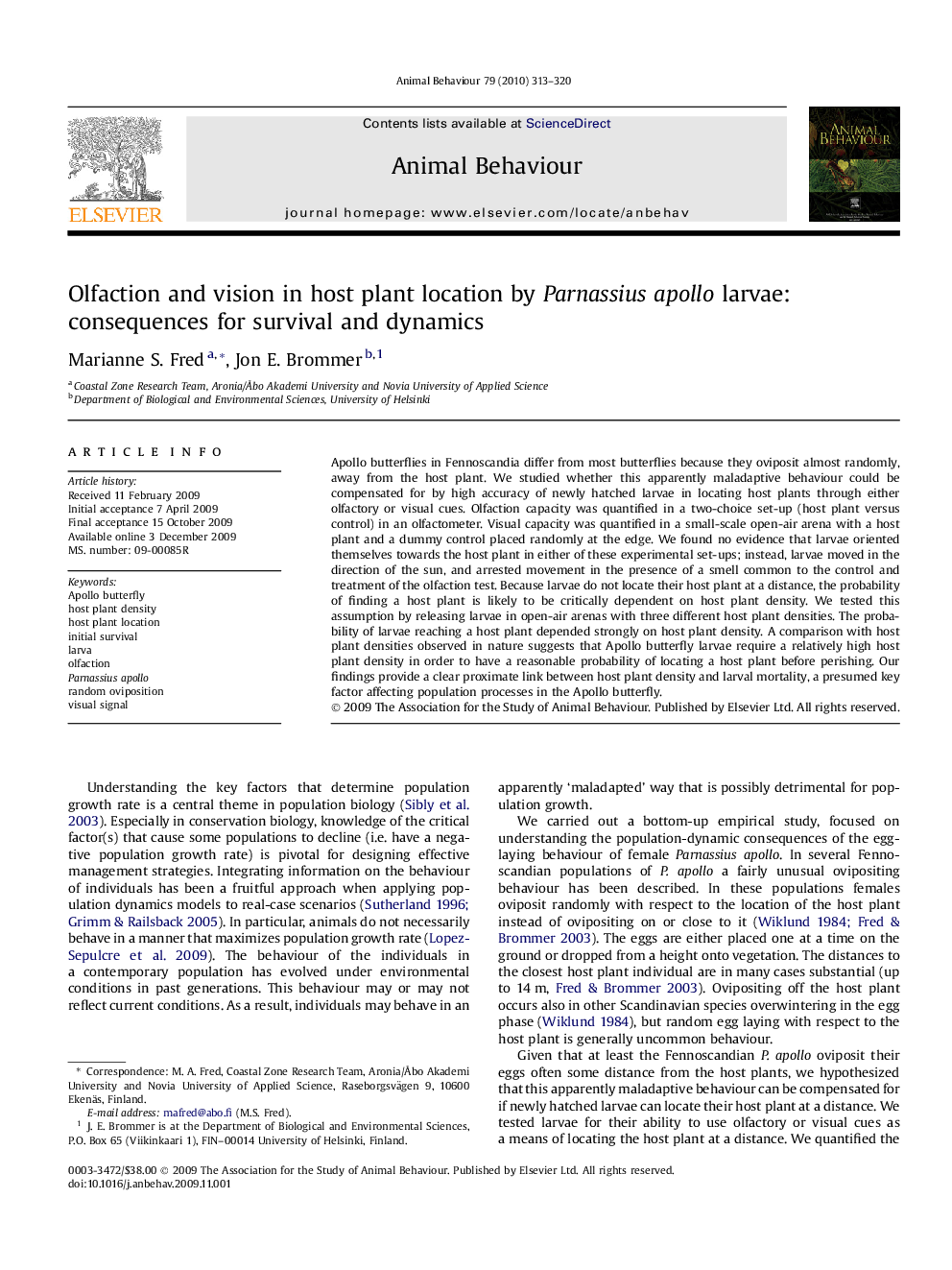| Article ID | Journal | Published Year | Pages | File Type |
|---|---|---|---|---|
| 2417475 | Animal Behaviour | 2010 | 8 Pages |
Apollo butterflies in Fennoscandia differ from most butterflies because they oviposit almost randomly, away from the host plant. We studied whether this apparently maladaptive behaviour could be compensated for by high accuracy of newly hatched larvae in locating host plants through either olfactory or visual cues. Olfaction capacity was quantified in a two-choice set-up (host plant versus control) in an olfactometer. Visual capacity was quantified in a small-scale open-air arena with a host plant and a dummy control placed randomly at the edge. We found no evidence that larvae oriented themselves towards the host plant in either of these experimental set-ups; instead, larvae moved in the direction of the sun, and arrested movement in the presence of a smell common to the control and treatment of the olfaction test. Because larvae do not locate their host plant at a distance, the probability of finding a host plant is likely to be critically dependent on host plant density. We tested this assumption by releasing larvae in open-air arenas with three different host plant densities. The probability of larvae reaching a host plant depended strongly on host plant density. A comparison with host plant densities observed in nature suggests that Apollo butterfly larvae require a relatively high host plant density in order to have a reasonable probability of locating a host plant before perishing. Our findings provide a clear proximate link between host plant density and larval mortality, a presumed key factor affecting population processes in the Apollo butterfly.
